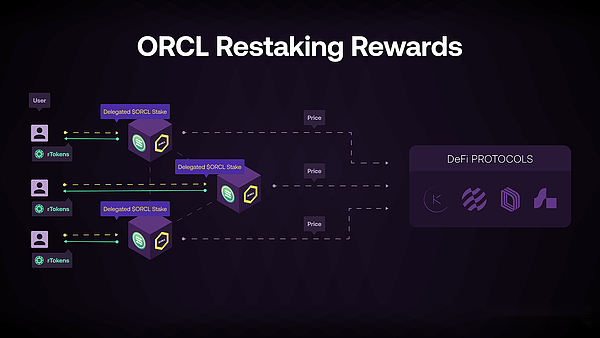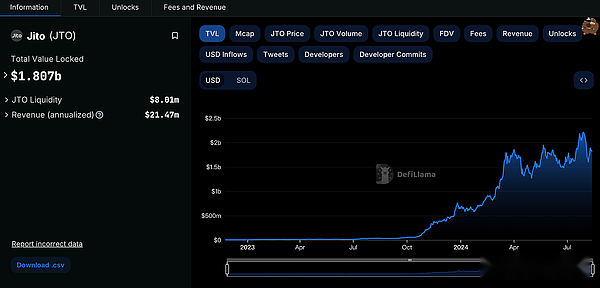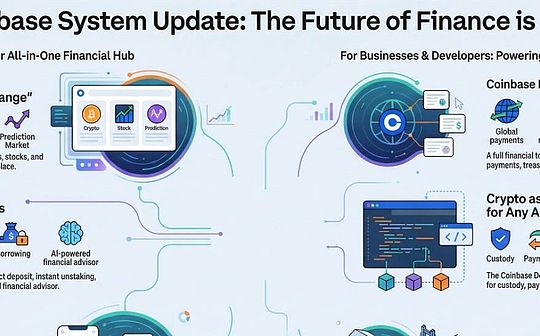
Author: hamster
Restaking has become a hot spot in the blockchain industry this year, especially Ethereum and Bitcoin ecology.With the spread of this trend, the Solana ecology has gradually joined the ranks of heavy pledge.In the Solana ecosystem, heavy pledge is not only considered an important way to enhance network security and increase the benefits of participants, but also the core of multiple innovative projects.Solay, Picasso, and Jito are the three major representatives of the current Solana heavy pledged track.
-
Solayer:SOLAYER provides a flexible pledge mechanism through the shared verification device network and endogenous AVS system that can automatically adjust the pledge strategy according to the market dynamic.This dynamic adjustment ability ensures the optimization of users’ investment returns under various market conditions.
-
Picasso: Picasso was initially established in the COSMOS ecosystem, and expanded through its IBC and AVS technology to multiple networks such as Solana, Ethereum and Polkadot.Picasso’s cross -chain interoperability has made it a competitive advantage in multiple blockchain networks, especially in solving the problem of interoperability between Solana and other blockchain, providing users with a broader cross -chain interaction choiceEssence
-
Jito: Jito, as the biggest protocol of TVL in the Solana network, occupies market dominance with its liquidity pledged token Jitosol.Jitosol not only provides basic pledge rewards, but also brings additional benefits to users by participating in MEV auction.Although JITO’s heavy pledge service has not been officially launched, its powerful technical structure and market influence have attracted widespread attention and laid the foundation for its future further development of the heavy pledged track.
Solayer:Endogenous AVS +Binance labs investment
Solayer is an innovative heavy pledge agreement designed for Solana ecological designEssenceBy allowing users to pledge the SOL tokens or liquidity pledges (LST) on multiple DAPPs, Solayer not only significantly improves the security of the network, but also optimizes the efficiency of funds.This flexible pledge mechanism enables users to obtain benefits from multiple aspects, such as rewards generated by MEV and AVS.
Since the launch of softness in May 2024, Solay has developed rapidly in the Solana ecosystem.According to DEFILLAMA data, as of August 11, Solay’s TVL reached US $ 163 million, ranking 13th in the Solana protocol.The total pledge of SOL on the platform exceeded 259 million, attracting more than 86,000 independent users to participate.
>
Technical architecture
-
Distributed cloud infrastructure: SOLAYER uses decentralized cloud -based infrastructure,Based on the powerful performance of Solana, provide high -quality block space and higher transaction throughput capacity for DAPP to DAPPEssenceSolay’s architecture allows DAPP to enjoy customized service quality according to the user’s pledge right, so as to better use the resources of the Solana network.
-
Consensus and verification: Solayer’s heavy pledge mechanismPOS and POH consensus algorithms based on SolanaEssenceBy pledning SOL or LST to the pledged pool of Solayer, users can participate in the verification process of multiple systems and obtain additional returns.Solay supports multiple pledge pools and automatically balances the asset allocation in these pools through smart contracts to ensure the maximum income between different verifications.
-
Sharing Verification Network (SVN)TheSolay introduces the concept of sharing verification network, integrates the resources of multiple authenticants to provide security guarantee for the endogenous AVS (active verification service) inside SolanaEssenceThis shared network not only improves the degree of decentralization of the network, but also enhances the liquidity and overall efficiency of the platform through resource integration
-
Endogenous AVS (Endogenous AVS)TheEndogenous AVS is an active verification service standard provided by the Solayer for applications in the Solana ecosystem.Through this standard, applications can obtain customized block space and higher security.The pledgers can pledge SOL or LST to the specified application. These applications use endogenous AVS to obtain verification services, thereby improving transaction priority and security, and enhancing the integration efficiency of the main chain of SolanaEssenceIn short, endogenous AVS helps apps optimize performance and improve transaction processing capabilities and security.
-
Sharing Verification Network: This architecture enables Solayer to provide more efficient block space and transaction processing capabilities for DAPP inside Solana.
-
Endogenous AVS: Compared with other projects, this design of Solay pays more attention to the close integration with the main chain of Solana to ensure the efficient use of resources.
-
Solay has the ability to automatically adjust the pledge strategy according to the market.Through smart contracts and shared verification device networks, Solay can automatically balance the asset distribution in different pledges when market conditions change to optimize the income.This dynamic adjustment mechanism ensures that the assets of pledges are always in the most favorable position and maximize investment returns.
-
The heavy pledge mechanism provided by Solayer allows users to obtain triple revenue through multiple pledges: including MEV enhanced pledge income, Solayer platform awards, and SVN income.This diverse income structure makes Solay has obvious return on investment in the competition with other Solana heavy pledge projects.
-
On July 29, 2024, Binance Labs announced a strategic investment in SolayerIt shows the recognition of its technology and market potential.This investment not only helped Solay to expand its team and technical capabilities, but also supported its integration of more agreements to enter the Solana ecosystem.
-
AVS solution: In order to solve the problem of SOLANA that cannot be directly compatible with IBC, Picasso introduced a special AVS solution.This AVS is deployed on Solana as a smart contract. By providing a state proof, Solana can interact with other blockchain supporting IBC, thereby overcoming its original technical restrictions
-
Heavy pledgeThePicasso’s heavy pledge allows users to pledge SOL and LST (such as MSOL, JITOSOL, and Bsol) to the provenant pool of SolanaEssenceThrough this mechanism, users can increase pledge income, and also provide additional security guarantee for the Solana network.
-
Heavy pledged mount system: Picasso’s RestAKing Vaults is the core component of heavy pledges on Solana, designed for management and optimization of pledged assets of users.The system allows users to patent to the tokens in various Solana ecosystems, including SOL and LST (such as MSOL, Jitosol, and Bsol) to pledge them into specific verification pools.The following is the detailed working principle of this system:
-
Pledge and certificateTheAfter the user deposits SOL or LST in the heavy pledge library, the system will generate a unique NFT for each pledge as a certificate of deposit.These NFTs not only represent the value of pledge, but also include key information related to pledge, such as pledge amount, token type, time to receive rewards, and related provers public keys.By using NFT, the system ensures the transparency and traceability of pledge records.
-
Reward computing and receiving: Each pledker can receive pledge rewards by holding the corresponding NFT.The calculation of the reward is based on the user’s block height since receiving the reward last time, thereby ensuring that the pledker has a fair income distribution.When the pledker decides to extract the pledge, the system will first calculate the reward they deserve, and then return the pledged token and the corresponding reward to the user, and at the same time destroy the NFT generated by the Yuan.
-
Liquidity and safety: During the heavy pledge, the user’s assets will be locked until the implementation of Solana IBC.This not only provides an additional security layer, but also allows users to continue to obtain pledge income during the lock -up period.With the launch of IBC, users can choose to unlock the pledged assets and extract their tokens after observing the 7 -day unbinding period.
-
Cross -chain interoperabilityThePicasso can operate with other blockchains by introducing IBC and AVS.Compared with other Solana heavy beta protocols, Picasso’s cross -chain is more extensive, providing users with richer interaction options.
-
Flexible heavy pledgine system: PICASSO’s heavy mortgage system supports multiple Solana ecosystem tokens for pledge, and provides users with an intuitive and transparent pledge management experience by generating the NFT certificate.This design not only simplifies the reward calculation and collection process, but also enhances the safety and traceability of pledged assets.
-
Security and reward mechanism: Picasso has designed a unique punishment and reward mechanism to ensure the security of the network through strict supervision of the performance of the verified by the verificationrs.at the same time,Picasso through NFT and Program Derived Address (PDA) technology ensures the efficiency of the pledged reward calculation and collection process.Other protocols may depend more on traditional authenticity management methods in terms of securityAnd Picasso’s system is more innovative and rigorous.
-
Vault ProgramThe
-
LRT management: Vault Program is responsible for creating and managing LRT, supporting a variety of tokens that meet the Solana SPL standard as the underlying assets.This module processs LRT’s casting, destruction and commission, and allows customized commission strategies between multiple operators and AVS, thereby enhancing the flexibility and adaptability of the system.
-
Flexible cutting mechanism: Vault Program also introduced a high -level cutting mechanism,Multi -level cutting conditions and upper limits are allowed to be set to ensure that it can be effectively managed and reduced when problems occur.This refined risk management tool provides a highly customized security model for the project.
-
RestAKing ProgramThe
-
AVS management: RESTAKING Program is responsible for creating and managing AVS and its operators, coordinating the relationship between AVS, operators and vaults to ensure the efficient operation of the entire system.PassAfter this module, the project party can quickly deploy and manage economic security mechanisms, and provide security guarantee for new chain services and products.
-
Reward and punishment mechanismTheRESTAKING Program also manages reward distribution and reduction of punishment to ensure the security of the network and the rationality of economic incentives.Through flexible reward mechanisms and rigorous punishment systems, Jito further enhanced the overall security of the Solana network.
-
Multi -asset support and flexibility: JITO’s heavy pledge architecture supports any tokens that meet the Solana SPL standard, not limited to LST.This makes JITO’s great flexibility in the management and use of tokens, allowing users to use a variety of assets to participate in heavy pledge, thereby improving capital efficiency and flexibility.
-
Advanced cutting and risk management: JITO RESTAKE introduced refined cutting conditions, allowing setting a multi -layered cutting mechanism and cutting limit.The project party and users can better manage the risks and ensure that the potential losses can be effectively controlled during security incidents.
-
Back jitosol: JITO RESTAKE is one of the most popular liquid trajectory tokens in the Solana network -Jitosol, which has a strong market competitiveness.JITOSOL not only provides basic pledge rewards, but also brings additional benefits to users by participating in the MEV auction, which enables Jito Restake to provide users with more attractive pledge servicesEssence
-
Modular design and developer supportTheJITO’s architecture is highly modular, allowing developers to easily build and manage pledge, heavy pledge and LRT products on it.
-
Market status and incomeTheAs the largest agreement of the Solana network, Jito, according to DEFILLAMA data, its TVL has reached $ 1.802 billion, with an annual income of US $ 21.47 million.These remarkable results have consolidated Jito’s leading position in the Solana ecosystem.Although JITO’s heavy pledge service has not been officially launched, the code and plans they released have attracted widespread attention and laid the foundation for its future further development of the pledged track.
Superiority
1. 1.Technical architecture advantage
2.Dynamic adjustment pledge strategy
3..Multi -income structure
4. 4..Binance Labs strategic investment
Picasso: cross -ecological pledge, from cosmos to Solana
Picasso is a cross -ecological blockchain project that focuses on providing interoperability and heavy pledge services for multiple networks.Originally established in the COSMOS ecosystem, Picasso has expanded its influence through its general cross -chain communication protocol (IBC), and has been integrated in multiple networks such as Solana, Ethereum, Polkadot.The core concept of Picasso is to enhance the security and liquidity between the network through cross -chain interoperability and decentralized trust structure.
>
Technical architecture
Through these technical architectures, Picasso not only solves the problem of mutual operations of Solana and IBC, but also provides users with an efficient and secure pledge management platform.
Superiority
Jito Restake: Solana TV’s first agreement to enter the field of heavy pledge
As the first project of Solana Ecological TVL, Jito focuses on enhancing the pledge income and security of the network. One of its main products is LST Jitosol.On July 25, Jito released the JITO RESTAKE code and officially entered the heavy pledged trackEssenceThrough this service, users can pledge to tokens that meet the Solana SPL standards to JITO to provide security guarantee for new chain services and products.
>
Technical architecture
JITO’s heavy escort technology architecture is a highly flexible and scalable infrastructure design for Solana network design, which aims to enhance the economic security and expansion capabilities of the network.It consists of two main components: Vault Program (vault plan) and RESTAKING Program.
JITO’s heavy pledge technology not only supports economic security guarantee by pledged Jitosol or other SPL tokens, but also allows LRT to generate LRT. Users are involved in pledge and heavy pledge while maintaining liquidity.In addition, JITO’s modular design and open developer ecology enables it to support various complex pledge strategies and cutting mechanisms, and promote the sustainable development and innovation of the Solana ecosystem.
Superiority
>
Jito Restake has not yet officially launched, but Jito, as the largest protocol for Solana network, is believed to be the important force in the Solana ecosystem with the gradual launch of the JITO RESTAKE service.
Summarize
With the continuous development of the Solana ecosystem, heavy pledge has become an important means to enhance network security and increase the benefits of participants.As the representative projects in the track, Solay, Picasso and Jito each show their unique technical structure and market advantages.SOLAYER quickly occupies a place in the market through endogenous AVS and sharing verification network, combined with dynamic adjustment of pledge strategies and multiple income structures.Picasso provides users with high -efficiency and secure pledge management platforms for its cross -chain interoperability and flexible heavy pledge depot system.JITO uses its largest protocol position in the Solana network, and uses Jitosol’s market advantages to laid a solid foundation for future heavy pledge development.







